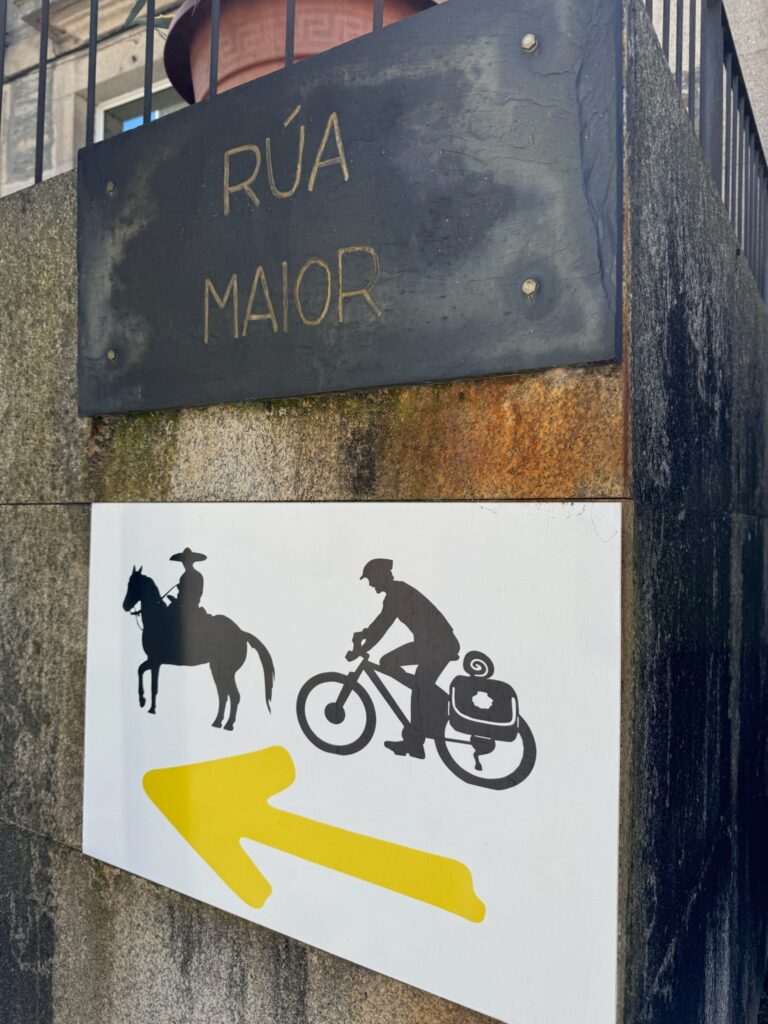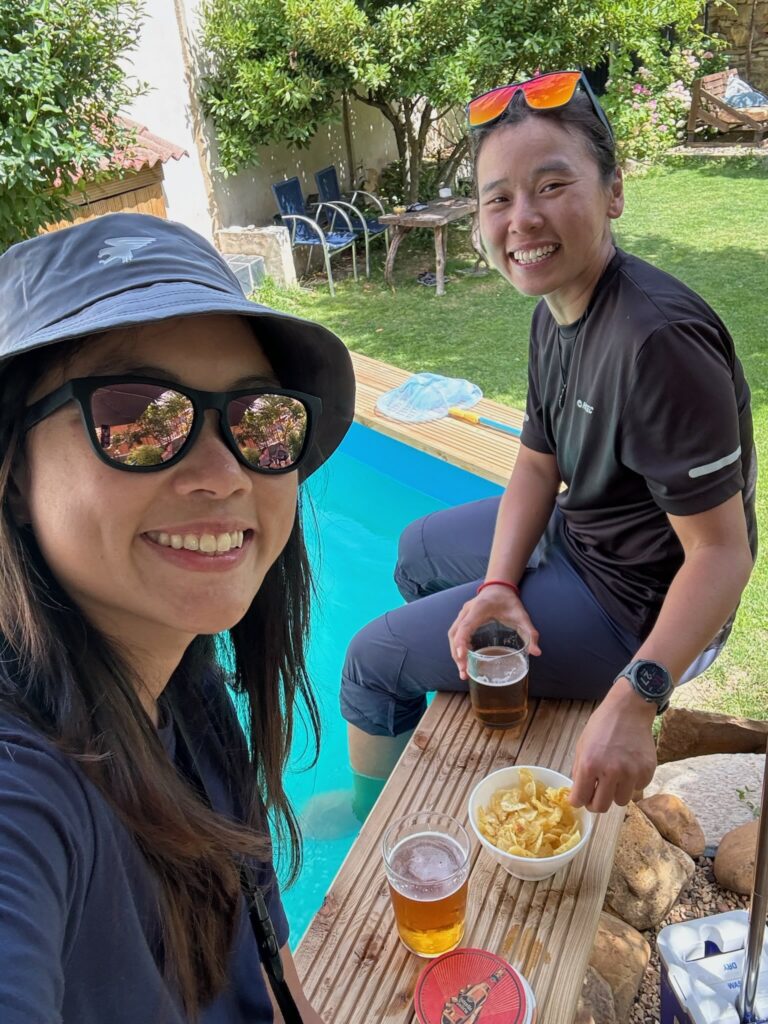
Whether on foot, two wheels, or four hooves, there’s no right or wrong way to do the Camino. The only thing that matters is taking that first step.
My Camino - My Way
Don’t let anyone tell you how you should do your Camino. We had a very different reason from most people we met along the way. 👉 Read it here! This is your journey—whether you’re walking for spiritual reasons, adventure, fitness, healing, or simply because you felt like it.
Some people wake up at sunrise to walk, others take it slow and savor every café stop. Some carry their full backpack, others send their bags ahead. Some complete the Camino in one go, while others return year after year to walk it in sections. We even met people who had completed the entire Camino Francés multiple times—it just keeps calling them back.
And it’s not only about walking. Many pilgrims choose to cycle the Camino, covering more ground each day while still soaking in the scenery and spirit of the journey. Cyclists often follow the same routes as walkers but take different paths in tricky areas, and they face their own unique set of challenges—especially on steep climbs or muddy trails.
Then there are the horseback pilgrims—yes, really! Riding the Camino on horseback is a nod to its medieval roots and offers a truly unique and powerful connection with the landscape. It requires more planning, but it’s an incredible way to experience the trail.
The Camino doesn’t give you what you want. It gives you what you need. - Unknown
Open Minds - Let the Camino Speak to you
The Camino has a funny way of revealing exactly what you need—if you’re open to listening. Sometimes it teaches patience, resilience, surrender, or the simple art of being present. Other times it surprises you with a quiet moment that shifts your perspective in ways you didn’t expect.
No two paths are the same. You’ll meet people from all walks of life, each with their own story, purpose, or reason for being there. Some are healing from grief, others are chasing adventure, seeking clarity, or simply enjoying time off in a meaningful way.
Whatever your reason, go with the flow. Embrace the detours, the long conversations, the blisters, and the beauty. And most importantly—walk with an open heart and an open mind. Don’t judge how others choose to do their Camino. Every journey is valid, and every step matters.

It's Okay to Ask for Help, Take Rest Days - It's Not a Race
Whether it’s hopping on a bus or taxi for a stage, sending your bag forward, or stopping at a pharmacy for blister care—seeking help doesn’t make your Camino less authentic. Some days will be tough, and sometimes a little help makes the difference between pushing through and actually enjoying the journey. Listen to your body, and do what’s best for you. You’ll meet people who power through 30+ km days back to back—but that doesn’t mean you have to. Listen to your body and take a rest day if you need it. Stay an extra night in a town you love, have a long café breakfast, or just soak in the experience. The Camino is about the journey, not how fast you finish.
Download the Right Apps
Technology can make your Camino so much easier. From real-time maps and albergue listings (some even show bed availability if you’re connected to Wi-Fi), to food recommendations and terrain previews—having the right apps can take a lot of stress out of planning.
In fact, these tools aren’t just for navigation—they help with mental prep too. We used our favorite app daily to plan coffee stops and lunch breaks, deciding whether to rest or push on to the next town by checking distances and terrain. It gave us a sense of control while still allowing for flexibility.
I’ve put together a list of the most useful Camino apps—including one bonus app that might just enhance your taste buds!
👉 Read it here!
Learn Some Spainish
You don’t need to be fluent in Spanish to walk the Camino, but even learning a few basic phrases can make a big difference. One of the very first expressions you’ll hear—and start saying yourself—is “¡Buen Camino!” The second? Likely “Café con leche!” And depending on your style of relaxing after a long walk, the third might be “Vino tinto” or “Cerveza.” 😄
Generally, English is widely understood in the main towns and albergues—or at the very least, the universal language of hand gestures does the trick! But locals really appreciate any effort you make to speak Spanish, and those little moments of connection can be unexpectedly meaningful.
Not sure where to begin? Check out my post on Camino Myths vs. Reality, where I talk about the language barrier and other surprises along the way! 👉 Read it here!
At the end of the day, your Camino is yours alone. Walk at your own pace, make it your own, and enjoy every single step.
¡Buen Camino! 🚶♀️✨
